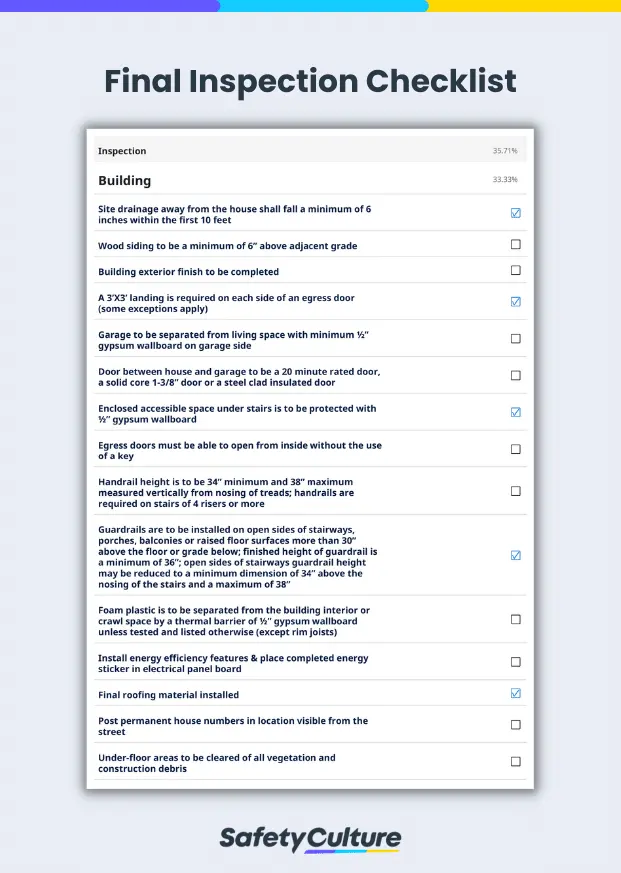What is a Final Inspection Checklist?
A final inspection checklist is used by building inspectors to check newly constructed or remodeled commercial and residential properties for building code compliance. Building inspectors can also choose to give a final inspection checklist to contractors even before conducting the final inspection so that safety issues are addressed earlier.
What is Required for a Final Building Inspection?
Building inspectors look for and inspect the following items in a final inspection:
For commercial properties –
|
For residential properties –
|
What Happens Before a Final Inspection
There are many steps to accomplish in the inspection process before the building inspector can issue a certificate of occupancy. The first step in this process is the foundation inspection, which is conducted before the concrete is poured.
A thorough foundation inspection is crucial as some parts of construction cannot be fixed after the concrete has been poured. Examples of this are pier depths, structural rebar, footings, stem walls, and retaining walls.
The next step in the inspection process is the rough-in inspection, which is composed of three inspections (mechanical, electrical, and plumbing or MEP) and may sometimes include the framing inspection as well. The mechanical and plumbing inspections, similar to the foundation inspection, must be conducted before the systems are concealed.
Final Inspection vs Pre-Settlement Inspection (Final Walkthrough)
The main difference between a final inspection and a pre-settlement inspection is that the final inspection is usually conducted by the city’s building inspector while the pre-settlement inspection is completed by the buyer of the property.
A pre-settlement inspection or final walkthrough is the buyer’s right to ensure that the property is in the same condition as the initial walkthrough. Building inspectors cannot conduct pre-settlement inspections without the presence of the buyer as they would not be privy to what was stated in the purchase contract.
How to Conduct Final Inspections Efficiently
Though final inspections are conducted only when the property is 100% complete and all the construction work has ended, as the last inspection before occupancy, it’s important for the building inspector to still be on the lookout for building code violations.
As the primary enforcer of safety, it’s the building inspector’s responsibility to ensure a fully compliant, occupancy-ready property. However, since building inspectors often have to fit multiple inspections in one day, they also need to conduct final inspections efficiently as well. Here are tips on how to do just that:
Prepare Documents Beforehand
Before leaving for the building site, review all available information such as inspection history, what inspections have passed, what has not passed, problems associated with the project, and individual inspection records.
Preparing these documents beforehand can save the building inspector valuable time on the field and may lead to the discovery of issues previously missed by other inspectors.
Give the Contractor a Heads-Up
If an issue has been identified, it’s good to let the contractor know in advance so that they can resolve it before the final inspection. Informing the contractor what the building inspector will be looking for during the final inspection can also result in less code violations such as notches, cuts, and penetrations in structural frame elements and lack of accessibility for safe egress.
Use a Digital Final Inspection Checklist
For building inspectors, paperwork takes up most of their day, though it doesn’t have to. With a digital final inspection checklist, submitting reports and occupancy permits are fast and hassle-free.
No need to type everything up, since a digital checklist does the work for you. Digital final inspection checklists are also much easier to share with contractors and fellow inspectors than paper checklists.


